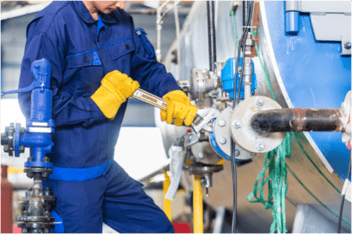Webinar Registration: Stop Wasting Money on Plant Expansions - Optimize Your Layout First
Picture this: forklifts weaving through cramped aisles, workers taking circuitous routes to retrieve tools, and raw materials stored in inefficient locations that slow down production. If this scene feels familiar, you're not alone—but this inefficiency is likely costing you far more than you realize.
When production bottlenecks emerge or your facility feels congested, the natural response might be We need more space. However, before you commit to an expensive expansion project, there's a smarter and more cost-effective approach: optimizing your existing layout could unlock hidden productivity potential and significant cost savings.
The True Cost of Expansion vs. Optimization
Let's be honest: plant expansions are expensive. Between construction expenses, production disruptions during building, increased utility costs, and ongoing maintenance, you're looking at a substantial capital investment. But here's the critical question: do you actually need more space?
Many manufacturers overlook a fundamental truth: strategic modifications to their factory layout can deliver impressive results. Instead of breaking ground on a new facility wing, consider how materials and people flow through your current space. Are your machines and workstations arranged optimally? Do you have recurring bottlenecks creating traffic jams for workers and equipment? Often, thoughtful adjustments to your floor plan can resolve issues that seemingly demand more dramatic solutions.
Understanding the Impact of Poor Layout
A suboptimal layout doesn't just create inefficiencies—it steadily erodes your bottom line. Consider these hidden costs:
- Lost productivity from workers navigating around obstacles
- Excessive equipment wear and fuel consumption from unnecessary forklift movements
- Increased risk of quality issues from excessive material handling
- Higher probability of safety incidents in congested areas
- Elevated energy costs from inefficient process flows
When materials travel complex routes through your facility, you're not just wasting time—you're increasing accident risks and operational costs. Bottlenecks create a domino effect, impacting your entire operation's efficiency.
Strategic Steps for Layout Optimization
Before investing in new square footage, consider these practical optimization strategies:
1. Resolve Traffic Flow Issues
Start by analyzing high-traffic areas—often the biggest efficiency killers. Conduct a thorough walk-through of your facility and observe movement patterns. Are forklifts frequently waiting for clear paths? Do workers need to navigate around obstacles? Identify bottlenecks and establish dedicated, clear routes for critical processes.
2. Optimize Workstation Placement
For tasks that occur in sequence, make sure that workstations are proximately located. This simple change can dramatically reduce unnecessary movement and accelerate production. The time savings from reducing a worker's travel distance from across the plant to just a few steps can be substantial.
3. Streamline Material Handling
Every material movement incurs costs. Look for ways to reduce the number of times you move items from one place to another. Focus on simplifying workflows and minimizing material movement—it's often one of the most straightforward paths to enhanced efficiency.
The Business Case for Layout Optimization
While plant expansions occasionally become necessary, they should be your last resort. Layout optimization typically delivers faster ROI and requires significantly less investment. Improving material flow and reducing inefficiencies often allows you to handle increased production volumes within your existing footprint.
Beyond immediate benefits, an optimized layout can:
- Minimize production downtime
- Enhance workplace safety
- Improve energy efficiency
- Increase operational flexibility
- Boost worker satisfaction
Leveraging Data for Smart Decisions
Make your layout optimization data-driven rather than intuitive. Modern tools and techniques can guide your decisions:
- Use machine sensors to identify bottlenecks
- Track worker movements to spot inefficiencies
- Employ simulation software to test layout changes virtually
- Apply lean manufacturing principles to eliminate waste
- Conduct time-motion studies to quantify improvements
These tools help ensure your optimization efforts target the most impactful areas first.
Moving Forward
Layout optimization isn't merely about creating a more organized facility—it's a strategic initiative that can transform your operations. An efficient plant layout enhances competitiveness, improves profitability, and better positions you for sustainable growth.
Before rushing into an expansion project, take time to evaluate your current layout. Analyze traffic patterns, observe workflow bottlenecks, and identify improvement opportunities. You might discover that your existing space holds more potential than you imagined—and that the key to increased productivity isn't more square footage, but smarter use of what you already have.
Free Webinar:
Rethink Expansion by Improving Your Plant Layout
December 18, 2024 at 12:00 pm
https://us02web.zoom.us/webinar/register/WN_OGcb-jTPSEiq3zO3eXsJsw#/registration




